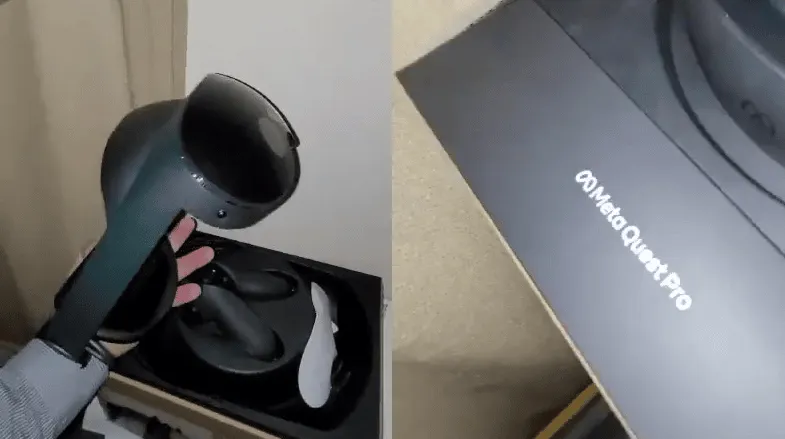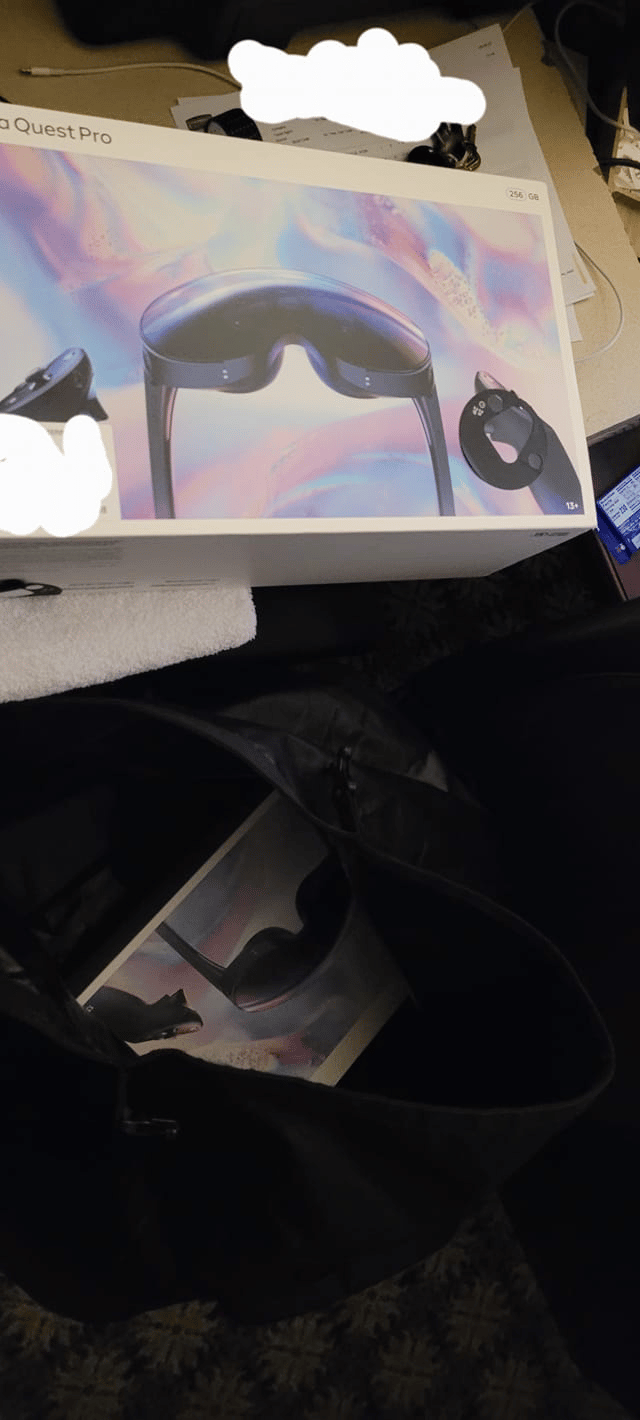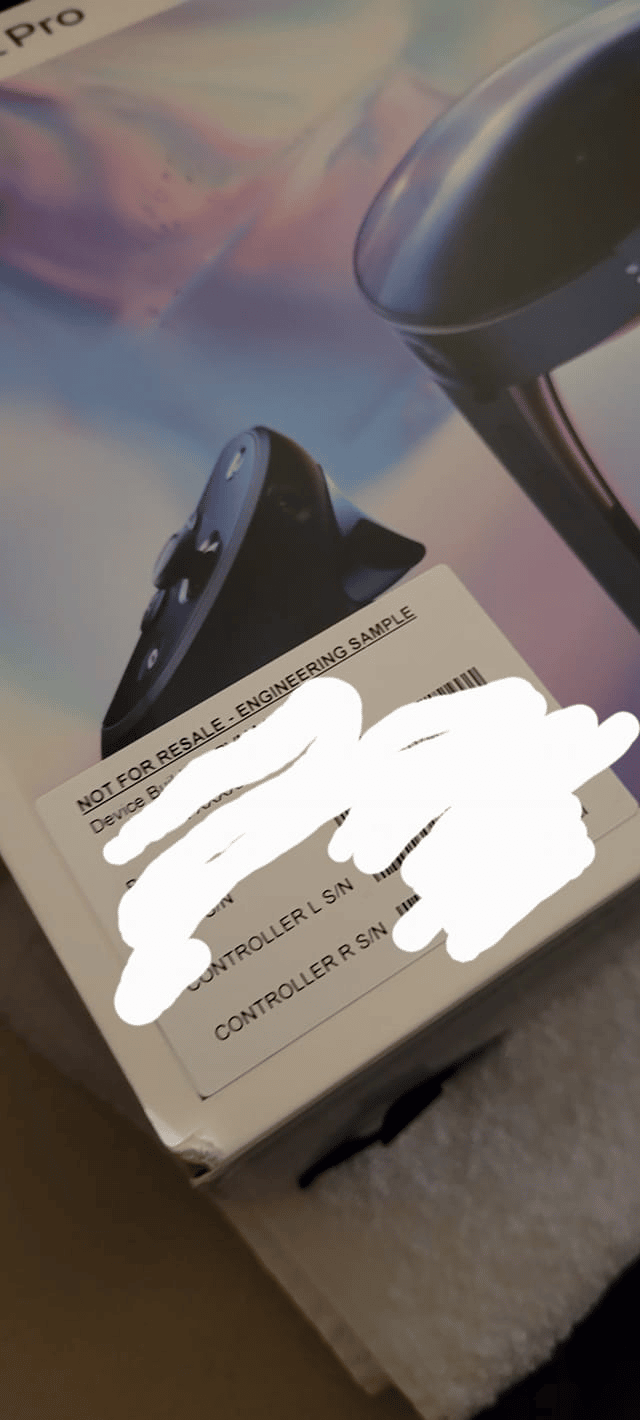A hotel worker says he found a Quest Pro sample unit, and he shared an unboxing video on Facebook.
Ramiro Cardenas first posted images in the ‘Oculus Quest 2’ Facebook group appearing to show Quest Pro packaging labelled ‘NOT FOR RESALE – ENGINEERING SAMPLE’. Cardenas claimed the boxes were left in the hotel he works at. The packaging resembles Quest 2’s, and like with Quest 2 the storage size is listed in the top right – in this case 256 GB.
Not everyone believed the images were real, but Cardenas then posted himself unboxing the headset to his gaming page. As was seen in a render made back in April, based on images of the headset apparently seen by YouTuber Bradley Lynch, the headset appears to have five external cameras – three on the front and one on each side. As was visible in Meta’s original teaser video, the new controllers ditch the tracking rings in favor of onboard cameras for independent inside-out tracking.
Cardenas didn’t try to turn on or set up the headset. He told UploadVR the “rightful owner” reclaimed it from the hotel. Watch our interview with him embedded below for the full details of how he found it and what he did with it.
Meta still refers to Quest Pro as Project Cambria – the codename given when it was announced at Connect 2021. The company revealed in May it will be priced “significantly” higher than $800. Mark Zuckerberg told investors the product’s focus is work use cases, and a leaked internal memo described it as for “prosumer / industrial-grade mixed reality” – though it will also run existing Quest content.
There was already overwhelming evidence for Project Cambria’s product name being Quest Pro. Zuckerberg used the name in an interview last year, a dataminer found it in a recent update to the Oculus iOS app, and units in developer hands are already accessing WebXR content.
Quest Pro’s slimmer visor is achieved through the use of pancake lenses, which support smaller panels at a shorter distance and thus a slimmer headset design. Pancake lenses are already used in HTC’s Vive Flow, and appear to be used in ByteDance’s upcoming Pico 4 and Pico 4 Pro.
Meta has already revealed key features of the new headset. It has built-in eye tracking and face tracking to drive avatars in social experiences, as well as much higher resolution cameras with color passthrough & a depth sensor for mixed reality.
In April a prominent supply chain analyst claimed the headset will have dual 2160×2160 Mini-LED LCD panels, up from the less than 1832×1920 pixels per eye of Quest 2’s regular LCDs. Import logs suggest it will have 12 GB RAM, up from Quest 2’s 6 GB.
Two weeks ago Mark Zuckerberg told Joe Rogan the company’s next headset will release in October, almost certainly referring to Quest Pro. Connect, Meta’s annual AR/VR conference, is scheduled for October 11th.
Article originally published on September 11th, 2022 but it was updated with information from our interview with the leaker on September 12th.































